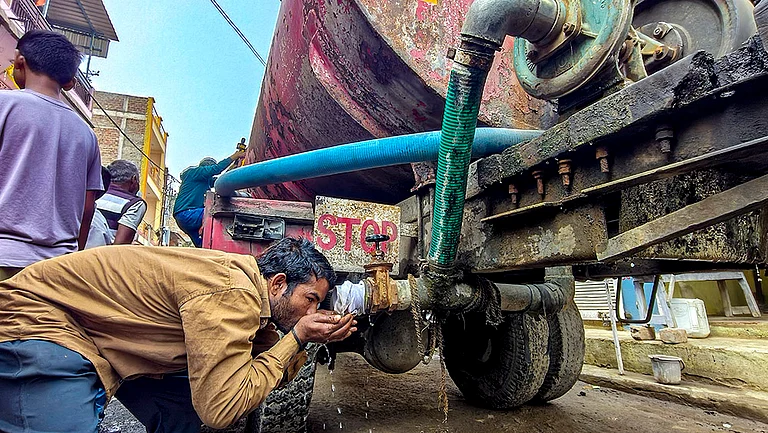Dorothy (46) was suffering from abnormal and heavy vaginal bleeding for a few months. She delayed her doctor’s visit hoping that it might be linked to the onset of menopause. After suffering for a while, she reluctantly consulted her gynaecologist. The consultant did several tests including transvaginal ultrasound and liquid-based cytology – a test for diagnosis of cervical cancer. After doing a thorough investigation, she was diagnosed with advanced cervical cancer stage. In spite of undergoing complete radiotherapy and chemotherapy treatment, she couldn’t make it after more than a year. Her family is burdened by a lifetime of mental trauma and financial distress. It could have been prevented if she was diagnosed at an early stage. Unfortunately, this is the story of 6 out of 10 Indian women diagnosed with cervical cancer.
Cervical cancer can be prevented
Cervical cancer involves the abnormal growth of cervical cells. The cervix is the lower end of the uterus at the top of the vagina. This cancer is a squamous cell carcinoma that begins at the lining of the cervix and spreads to other parts of the body like the uterus, vagina, bladder, rectum, and even the lungs. Cervical cancer ranks as the 4th most common cancer among women globally. However, India contributes to one-fifth of the global burden and is the second most common cancer prevalent in Indian women. Moreover, 80% of cervical cancer cases are diagnosed at an advanced stage, which reduces the survival rate and adds to a considerable financial burden. This translates into poor survival rates with nearly 1 woman dying of cervical cancer every 8 minutes, with the burden being greater in rural India. However, there is a breakthrough for the prevention of cervical cancer now.
In 99% of cases, cervical cancer is caused by a sexually transmitted virus called the human papillomavirus (HPV). Though most HPV infections resolve quickly, some persist to cause cancer. Once a woman is infected, it may take up to 15 to 20 years for cervical cancer to develop. Hence screening gains importance as it helps to catch the disease before it becomes dangerous. If detected early, cervical cancer is highly treatable. In the early stages, cervical cancer has no symptoms. The late-stage disease can cause abnormal vaginal bleeding, heavy or foul-smelling discharge, pelvic pain or bleeding after sexual intercourse.
Regular Screening is the Key
Preventive measures for cervical cancer include HPV vaccination and detection of pre-cancerous cells in the cervix via screening tests. Since cervical cancer takes years to develop, prompt treatment can stop this change of the cervical epithelial (cervical lining) from normal to cancerous development. Though the HPV vaccine is available in India since 2008 and is recommended from age of 14 onwards, it is not a part of the Universal ImmunisationProgramme to date, hence it is highly recommended for a young adolescent girl to take HPV vaccine before she becomes sexually active in her life. Those women who have missed out on taking the cervical cancer vaccine must undergo regular cervical cancer screening tests. It has been shown in a randomized controlled trial (RCT) that even a single round of cervical cancer screening tests after the age of 40 years reduces the risk of cervical cancer. The most common is the Pap smear, wherein cervical cells are collected and assessed for any suspicious changes. However, better and advanced screening techniques called Liquid-based cytology(ThinPrep®) uses a suspension of the cervical cells and reduce the number of false-negative results. Lastly, HPV testing is a highly sensitive test that detects the presence of HPV DNA or mRNA by analysing cervical samples. In some cases, both cytology and HPV test are conducted together as a Co-test.
The World Health Organization recommends cervical cancer screening via a high-performing test from the age of 21. The American College of Obstetricians and Gynecologists' recommendations are:
• Cytology once every 3 years, for women between the ages of 21-29.
• Cytology alone every 3 years or HPV test every 5 years or Co-testing every 5 years, for women between 30-65 years.
• No screening above 65 years of age.
Towards a cancer-free country
Covid-19 has taught us that prevention is better than cure. Prevent, screen, and treat ought to be the main objectives to fight against cervical cancer. Large-scale awareness programmes at the grassroots level, financially viable population-based screening, and adequate follow-up of screened women is the need of the hour.‘Cervical cancer is preventable with regular screening’ is the message that must reach every corner of India along with increased disease awareness and dispelling of cancer-related stigma/fear and embarrassment to enhance the uptake of cervical screening camps. Community involvement and strategic partnerships with the government/NGOs as well as private entities can help make accessible and affordable screening a reality across India. Today, we need complete commitment from all the relevant stakeholders to flatten the curve of cervical cancer mortality in our country.
(Dr Gayatri Deshpande, HOD –Dept of Obs & Gyn, Nanavati Max Super Specialty Hospital, Mumbai. Views expressed in this article are personal and may not necessarily reflect the views of Outlook Magazine.)





















